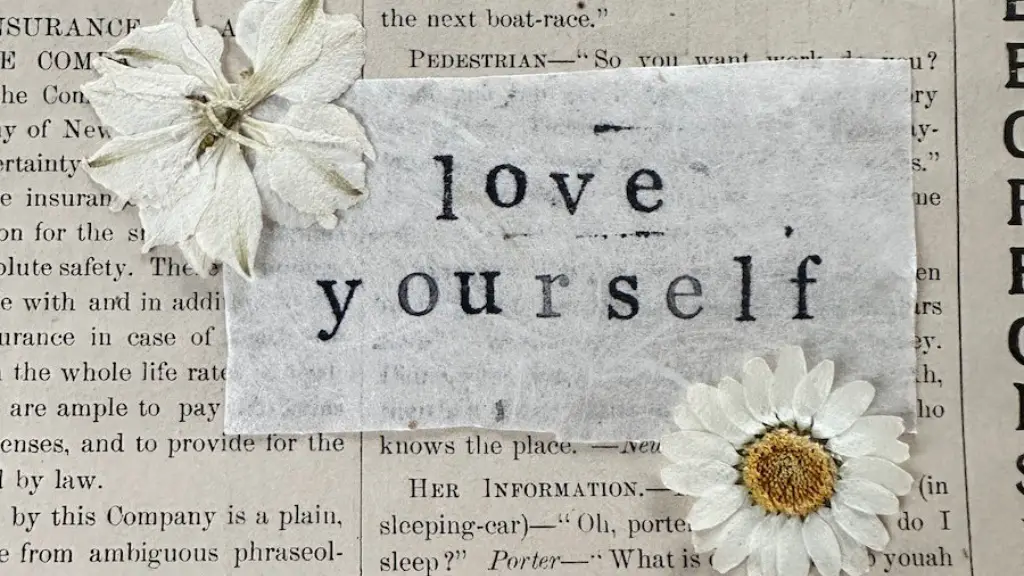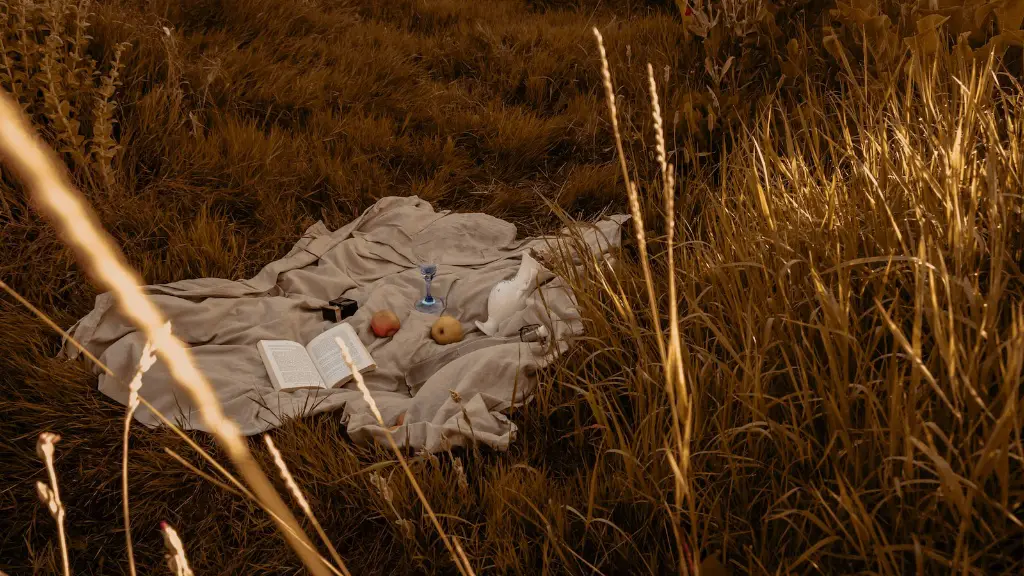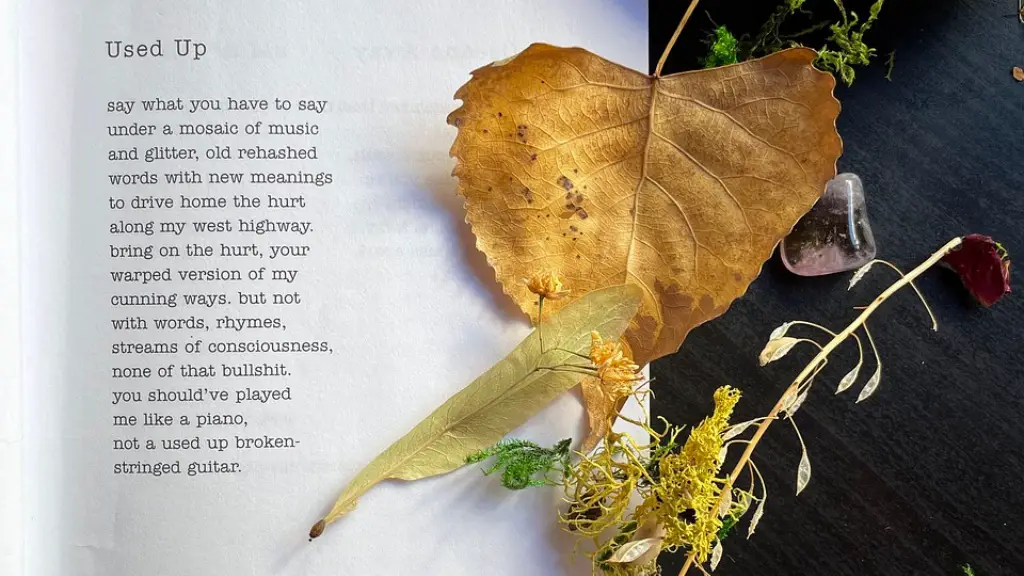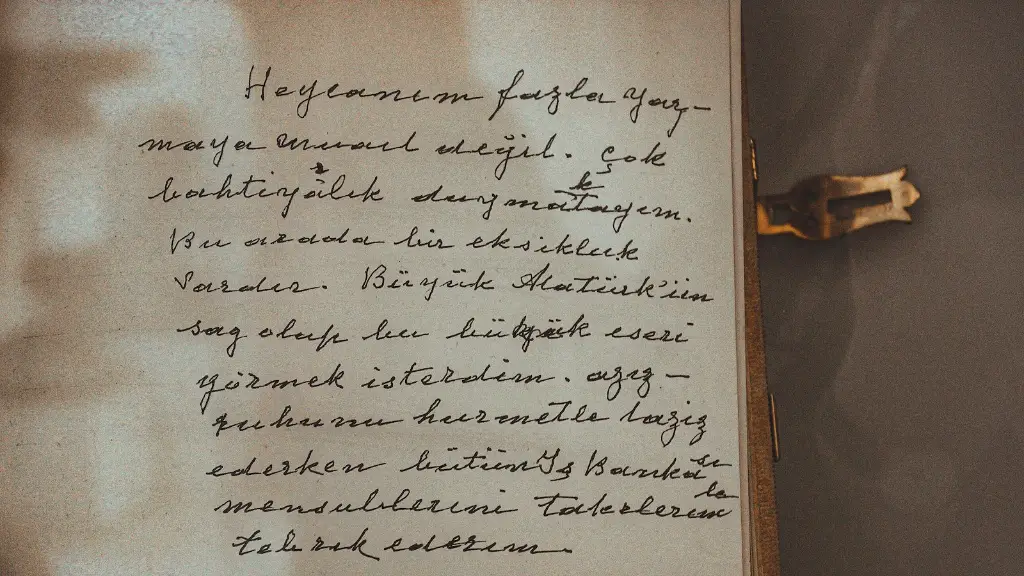Background
Lyrical poetry is defined as poetry or prose with a high emotional content, as well as staying true to its common definition of using metre, form and language to create an art form. It is believed to have originated from the ancient Greeks, who used extended and complex metaphorical descriptions in verse to tell stories. Lyric poetry is the most commonly found type of poetry, and is widely used in literature, music and religion.
The key component of lyric poetry is the presence of rhymes. Rhymes have been a part of poetry since its beginning and they serve to emphasise and highlight the language used in each poem. In many cases, certain rhymes help to tie the poem together, fleshing out the narrative it is trying to convey and can be used to show the writer’s creativity and originality.
Rhymes in Lyric Poetry
Rhymes in lyric poetry come from the use of different words that share a similar ending sound. Rhyming is seen as an important part of poetry, as it gives a rhythm to the poem that allows readers to read or recite with ease. It also creates an emotional connection between the words themselves, which can be crucial to expressing the writer’s message.
The most common type of rhyme in lyric poetry is the end rhyme. This involves two lines that end with the same sound. End rhymes are found in almost every genre of poetry, but they are especially common in lyric poetry. Other styles of rhymes, such as internal rhymes, are also commonly used in lyric poetry.
Benefits of Rhymes
The use of rhymes in lyric poetry has numerous benefits, from improving the readability of the poem to enhancing its emotional impact. Rhymes are often seen as the best way to convey the messages in a poem, as they are often the only element of the poem that can carry the message without needing explanation.
Rhymes also add a certain rhythm to a poem that can make it more enjoyable to read. As rhymes require the reader to pause at points, they can make the reader pay more attention to the message the poet is trying to convey. For example, a poem with a refrain can be more emotionally powerful than a poem without one. The repetition created by the refrain emphasises the key themes of the poem and adds another layer of emotion to the material.
Furthermore, rhymes can be used to add humour or light-heartedness to a poem, which can be especially useful when tackling important topics. Rhymes can also add musicality to a poem, which can add to the effect of the poem. For example, a poem about love may be enhanced by an underlying melody that carries throughout.
Potential Drawbacks
Despite the many benefits of using rhymes in lyric poetry, there are also potential drawbacks. One of the main objections against using rhymes in lyric poetry is that it can lead to too much reliance on the technique. This can prevent the writer from exploring and developing their narrative, as the rhymes become too prominent, leading to a lack of substance.
Another potential issue with using rhymes in lyric poetry is that, due to its structured nature, it can become too formulaic. Writers may be tempted to use the same rhymes and phrasing each time, leading to a lack of creativity and originality. Furthermore, many experts feel that rhyme can lead to a lack of clarity as the words may not be chosen purely due to their meaning.
Alternative Uses
Although rhymes are commonly used in lyric poetry, they can also be used in a more creative and original way. For example, they can be used to create interesting patterns within the poem, which can be used to emphasise and add layers of meaning to the poem. Furthermore, rhymes and other forms of repetition can be used to create a sense of intensity and urgency, often to great effect.
Using rhymes this way can help to make the poem more powerful and emotionally resonant. It can also add a level of intricate detail that can distinguish the poem from other works of art. While the use of rhymes can be used in this way, it is important to remember that not every element of the poem needs to rhyme, as this can often lead to a barrage of words that prey on the reader’s emotions.
Public Reception
The public opinion on the use of rhymes in lyric poetry is split. For some, rhymes can be seen as a great tool to add substance and emotion to a poem, while others see it as an unnecessary element that detracts from the actual content of the poem.
Despite this, the fact remains that rhymes have been used in lyric poetry since its inception, and they have become a core part of poetry in general. As more and more poetry is produced, the use of rhymes in lyric poetry has become increasingly common, as the technique is seen as a way to add an extra layer of meaning to the poem.
Does Lyric Poetry Rhyme?
In conclusion, it can be said that lyric poetry does indeed rhyme. Rhymes are a core part of this type of poetry, with many poets using them to add an extra layer of meaning and emotion to their work. While there are potential drawbacks to relying too heavily on this technique, it can often be used to great effect. As such, it is a worthwhile and popular choice for most lyric poets.
History of Rhyme
Rhyme has been used in poetry since ancient times, and it is believed that it originated in the Middle East. Ancient Arab and Persian poets used end rhymes to add more structure and form to their poems, and this practice eventually spread to Europe in the Middle Ages. By the renaissance period, the use of rhymes was widespread, although much of it was seen as rudimentary and unsophisticated.
Since then, however, the use of rhymes in poetry has become more complex and refined, with poets such as Shakespeare and Wordsworth pushing the boundaries of what the form is capable of. As the complexity of the language used in studies has grown, so too has the sophistication with which poets use rhymes.
Contemporary Use of Rhyme
Today, rhyme is still used extensively in literature and poetry. The use of rhyme in lyric poetry, in particular, has flourished in recent years, with poets taking advantage of the many benefits that rhyme can bring.
In addition to its use in poetry, rhyme is also used extensively in music. While the traditional form of rhyme remains popular, modern composers have also begun to experiment with using more intricate forms of rhyme in their works. This has led to some interesting and innovative pieces of music, as composers seek to take advantage of the emotional weight that rhyme can bring.
Influence on Poetry
Overall, the use of rhyme in lyric poetry has had a huge influence on the way that poets approach the craft. The emotional impact of rhyme, as well as its ability to create intricate patterns and meanings, has opened up a world of possibilities for poets. This has led to some of the most powerful and emotive pieces of lyric poetry ever written.
At the same time, however, it has led to some over-reliance on the technique and has caused some poets to become too formulaic in their use of rhymes. While this can be harmful to the development of new styles of lyric poetry, the use of rhymes has, on the whole, been a positive influence and has helped to create a more interesting and diverse range of poems.
Influence in Music
The use of rhyme in music has also had an extensive influence. It has helped to create some of the most iconic and beloved songs, as well as some of the most innovative pieces of music. Rhymes can be used to add emphasis to lyrics and to provide a sense of cohesion that can make the music more powerful and resonant.
At the same time, however, over-reliance on rhymes has led some songwriters to become formulaic, using the same rhymes in each song. This can often lead to a lack of originality, which can make some songs sound repetitive and one-dimensional.
Analysis of Rhyme in Lyric Poetry
The use of rhymes in lyric poetry is both beneficial and detrimental. On the one hand, rhymes can add an emotional depth and sophistication to the narrative, as well as providing the reader with a sense of cohesion and structure. On the other hand, they can be over-used, becoming a crutch that detracts from the message and inhibits the writers’ creativity.
Overall, lyric poetry has been greatly influenced by the presence of rhymes in its structure. Rhymes have allowed poets to better express their messages, as well as giving them more creative freedom. While there are potential issues with the use of this technique, these can be avoided by ensuring that the writer does not become overly reliant on them.



